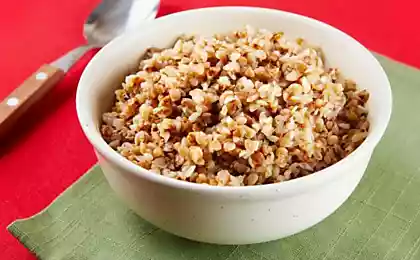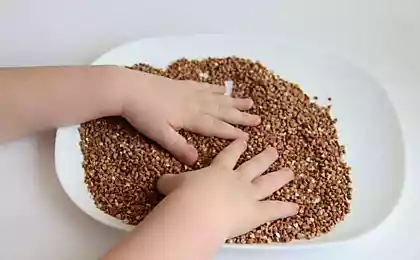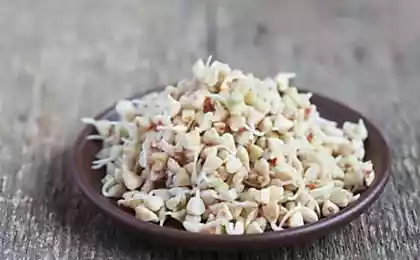194
Should I wash the buckwheat before cooking?
Buckwheat is the most popular cereal, which is distinguished by both nutritional and usefulness. It has become such a significant product that many buyers are even guided by the prices of buckwheat, as in general prices have increased recently. And if the cereal is more expensive, then this is not good.
We're going to talk about this today. How to properly cook buckwheatWhether it should be washed before cooking, and what you need to know about phytic acid, which is contained in this beloved cereal.

Someone believes that washing the cereal before cooking is optional and even superfluous. And someone even says that washed buckwheat after cooking is not as tasty as it could be.

However, it is difficult to agree with this approach to cooking, because in any pack of cereals there are many low-quality grains, as well as ordinary garbage. And this applies even to expensive buckwheat from trusted suppliers.
Do not forget that when storing buckwheat in barns, it is often treated with chemical solutions, and therefore it is not safe to use such a product without thorough washing.
157351
Sometimes in a bag with cereals you can find even fine sand, which can not only spoil the taste of the dish, but also damage the teeth. Note that washing cereals is necessary not only to get rid of garbage.
It's all about insidious phytic acid, which is contained in grains. It does not allow buckwheat to be normally absorbed, while preventing the absorption of other useful substances: potassium and zinc. And if you are lazy to wash buckwheat, then porridge from it will be less useful.

Therefore buckwheat should be washed. To do this, pour the necessary volume of buckwheat into a pan, pour clean water and wait a few minutes. The grains are saturated with water and will be at the bottom, and the debris floats up. All you have to do is drain the water.
It is better to wash several times until the water is clean and clear, without any impurities. By the way, you can try to clean buckwheat and with the help of a small sieve, which will rid the product of small debris and grains of sand.

It should be said about green buckwheat, which is preferred by supporters of proper nutrition. This product should also be washed, and this should be done until the water is clean. After washing, the product should be soaked in boiled water for a couple of hours so that the buckwheat sprouts a little - this will make it really useful.

After soaking, the buckwheat should be washed already before cooking. The fact is that from prolonged contact with water, mucus can form in it, which can not be used in any way. And only after such cleaning the product can be subjected to heat treatment.
It should be borne in mind that sometimes one soaking can not do, because heavy debris (like small pebbles) will be at the bottom. Therefore, it is better to first pour buckwheat on a clean surface and remove large debris, and only then wash.

As for cooking, then it is enough to observe simple proportions of products, where 1 glass of already refined buckwheat is poured with 2 glasses of cold water. Put the pan on the fire, salt and, stirring, wait for the water to boil completely. After that, you will only have to fill the porridge to your taste. Bon appetit!
We're going to talk about this today. How to properly cook buckwheatWhether it should be washed before cooking, and what you need to know about phytic acid, which is contained in this beloved cereal.

Someone believes that washing the cereal before cooking is optional and even superfluous. And someone even says that washed buckwheat after cooking is not as tasty as it could be.

However, it is difficult to agree with this approach to cooking, because in any pack of cereals there are many low-quality grains, as well as ordinary garbage. And this applies even to expensive buckwheat from trusted suppliers.
Do not forget that when storing buckwheat in barns, it is often treated with chemical solutions, and therefore it is not safe to use such a product without thorough washing.
157351
Sometimes in a bag with cereals you can find even fine sand, which can not only spoil the taste of the dish, but also damage the teeth. Note that washing cereals is necessary not only to get rid of garbage.
It's all about insidious phytic acid, which is contained in grains. It does not allow buckwheat to be normally absorbed, while preventing the absorption of other useful substances: potassium and zinc. And if you are lazy to wash buckwheat, then porridge from it will be less useful.

Therefore buckwheat should be washed. To do this, pour the necessary volume of buckwheat into a pan, pour clean water and wait a few minutes. The grains are saturated with water and will be at the bottom, and the debris floats up. All you have to do is drain the water.
It is better to wash several times until the water is clean and clear, without any impurities. By the way, you can try to clean buckwheat and with the help of a small sieve, which will rid the product of small debris and grains of sand.

It should be said about green buckwheat, which is preferred by supporters of proper nutrition. This product should also be washed, and this should be done until the water is clean. After washing, the product should be soaked in boiled water for a couple of hours so that the buckwheat sprouts a little - this will make it really useful.

After soaking, the buckwheat should be washed already before cooking. The fact is that from prolonged contact with water, mucus can form in it, which can not be used in any way. And only after such cleaning the product can be subjected to heat treatment.
It should be borne in mind that sometimes one soaking can not do, because heavy debris (like small pebbles) will be at the bottom. Therefore, it is better to first pour buckwheat on a clean surface and remove large debris, and only then wash.

As for cooking, then it is enough to observe simple proportions of products, where 1 glass of already refined buckwheat is poured with 2 glasses of cold water. Put the pan on the fire, salt and, stirring, wait for the water to boil completely. After that, you will only have to fill the porridge to your taste. Bon appetit!























